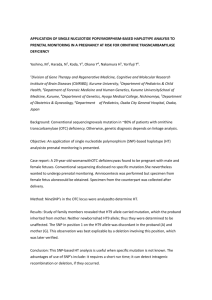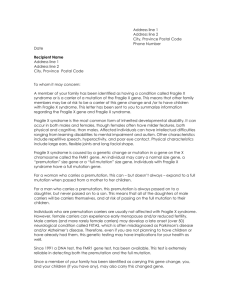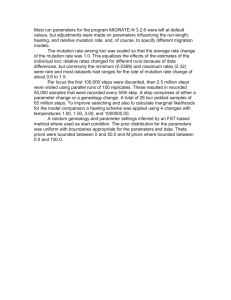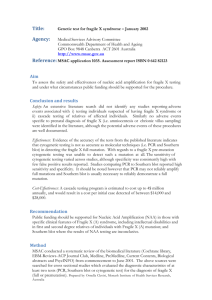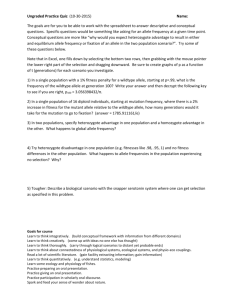Alice Abd El
advertisement
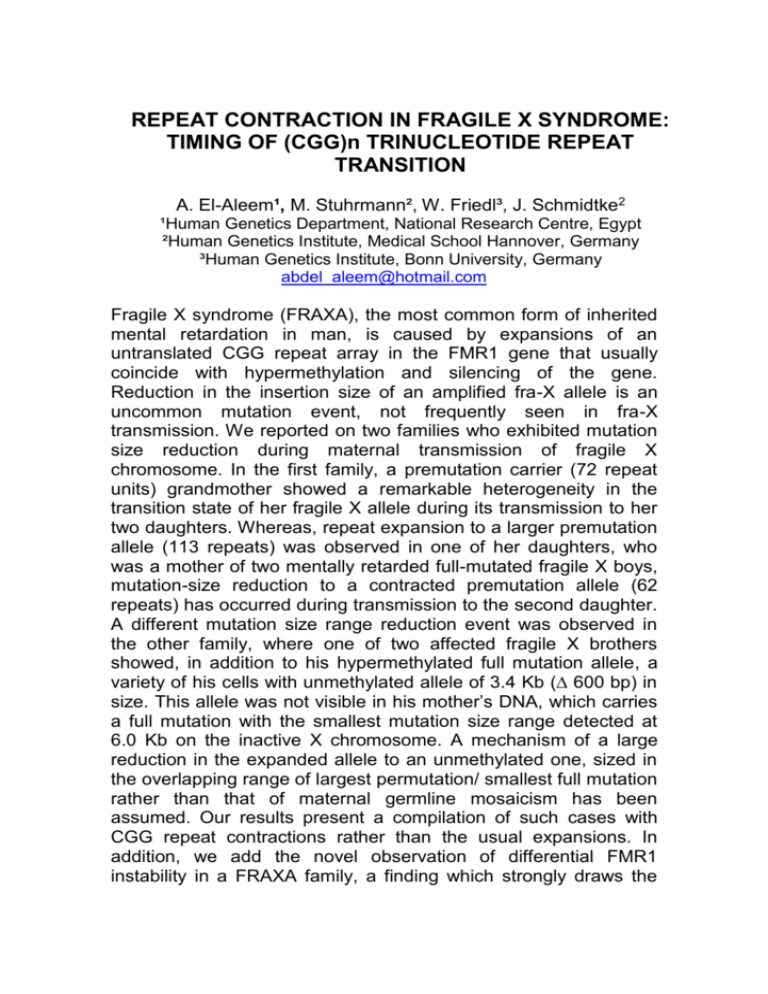
REPEAT CONTRACTION IN FRAGILE X SYNDROME: TIMING OF (CGG)n TRINUCLEOTIDE REPEAT TRANSITION A. El-Aleem¹, M. Stuhrmann², W. Friedl³, J. Schmidtke2 ¹Human Genetics Department, National Research Centre, Egypt ²Human Genetics Institute, Medical School Hannover, Germany ³Human Genetics Institute, Bonn University, Germany abdel_aleem@hotmail.com Fragile X syndrome (FRAXA), the most common form of inherited mental retardation in man, is caused by expansions of an untranslated CGG repeat array in the FMR1 gene that usually coincide with hypermethylation and silencing of the gene. Reduction in the insertion size of an amplified fra-X allele is an uncommon mutation event, not frequently seen in fra-X transmission. We reported on two families who exhibited mutation size reduction during maternal transmission of fragile X chromosome. In the first family, a premutation carrier (72 repeat units) grandmother showed a remarkable heterogeneity in the transition state of her fragile X allele during its transmission to her two daughters. Whereas, repeat expansion to a larger premutation allele (113 repeats) was observed in one of her daughters, who was a mother of two mentally retarded full-mutated fragile X boys, mutation-size reduction to a contracted premutation allele (62 repeats) has occurred during transmission to the second daughter. A different mutation size range reduction event was observed in the other family, where one of two affected fragile X brothers showed, in addition to his hypermethylated full mutation allele, a variety of his cells with unmethylated allele of 3.4 Kb (∆ 600 bp) in size. This allele was not visible in his mother’s DNA, which carries a full mutation with the smallest mutation size range detected at 6.0 Kb on the inactive X chromosome. A mechanism of a large reduction in the expanded allele to an unmethylated one, sized in the overlapping range of largest permutation/ smallest full mutation rather than that of maternal germline mosaicism has been assumed. Our results present a compilation of such cases with CGG repeat contractions rather than the usual expansions. In addition, we add the novel observation of differential FMR1 instability in a FRAXA family, a finding which strongly draws the attention to the presence of certain polygenic factors, all acting together at a very early postzygotic stage and could have the capacity to control or to modify the progression and stability of fra-X mutation, indicating that mutation-dynamics of the trinucleotide repeat in fragile X syndrome might be a multifactorial trait controlled not only by mutation related factors of repeats’ size and sequence motif variability, but also individually genetically determined factors contribute. Key words: fragile X syndrome, repeat contraction, triplets, mutation dynamics.


